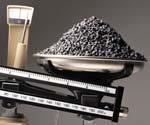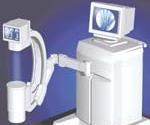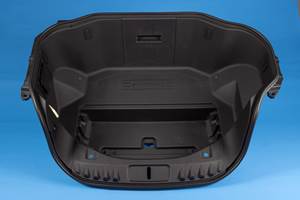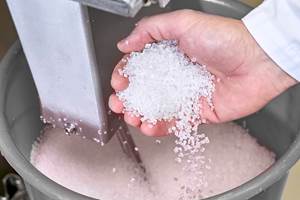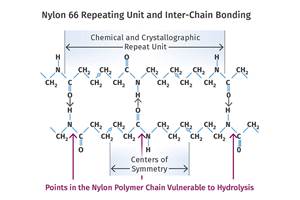Now They Want Plastics To Be Heavy?
Plastics weigh in with added design freedom and environmental friendliness—especially when the alternative is lead.
For half a century, the most basic appeal of thermoplastics has been their ability to make parts lighter and less costly while also delivering performance benefits over traditional materials like glass, ceramic, aluminum, steel, zinc, and lead. At first glance, any effort to deliberately manufacture heavyweight compounds with specific gravities of 1.8 to 15 appears to conflict with common sense.
The relatively new category of high-gravity compounds (HGCs) consists of thermoplastics containing 40% to 96% by weight of mineral filler or metal powder. These specialty materials have densities of up to 15 g/cc yet still have the moldability of plastics. HGCs are far more dense than existing plastics—e.g., 40% glass-filled nylon has a specific gravity (SG) of just 1.46—and are weighty enough to compare with aluminum (2.7 SG), zinc (6.64), steel (7.6), and lead-antimony (11.35). This calls for high-cost fillers and advanced formulation, so HGCs are priced at between $5 and $20/lb.
“The idea is not to sell weight alone, but rather to engineer into heavy compounds a greater degree of design freedom,” explains Paul Blanchard, market manager for Thermocomp HSG (High Specific Gravity) compounds at LNP Engineering Plastics. HGCs permit users to avoid costly machining, decorating, and disposal steps.
The HGC market is currently around 10 million lb/yr, but there has been an increase in applications along with the emergence of broader product slates. LNP’s series covers the 1.8 to 10 SG range. Other commercial HGC lines are available from RTP Co., GE Plastics, and PolyOne Corp.
Rationales for adding weight are to suit parts for balancing or ballast roles or to make them submersible in water (e.g., in fishing-line sinkers). In other cases, weight gives consumer products the heft and feel of metal, which can convey an image of enhanced value (e.g., in writing instruments and caps for premium perfume bottles).
Jeff Frankish, global marketing director at PolyOne, adds that highly loaded, metal-filled HGCs are able to duplicate the weight of metals while also providing environmental and design benefits relative to toxic heavy metals like lead. His company’s Ecomass line, with an SG range of 6 to 15, is made under license from Ideas to Market LP in Austin, Texas. These compounds open the way for lead replacement.
One successful application that captures a sense of HGC capabilities is an insert used to balance golf clubs made by Ping Inc. of Phoenix, Ariz. A high-gravity TPU compound from LNP is molded into inserts used to fine tune the “swing weight” of custom golf irons (shown on the cover of this issue). Dan Kubica, Ping’s director of club development, explains that club heads are cast in metal and then usually adjusted to individual customer needs by grinding, which is often imprecise.
In response, Ping designed a 2-cc port into the back of the club head, and developed an insert to fit. The insert required a material whose weight could be varied in 0.5-g increments so as to correct the club’s balance. The inserts reduce swing-weight variation by 50%. This has led to a significant decline in Ping’s reject rate. The inserts are in-mold decorated, which enables use of contrasting colors.
How do they process?
HSG compounds are generally classed according to SG levels. LNP divides them into light (1.7 to 4 SG), middle (4 to 7), and heavy (7 to 10) categories. PolyOne extends the heavy category to 15 SG or higher.
Light HGCs use mineral fillers, notably calcium carbonate (2.6 SG), talc (2.7), or barium sulfate (4.5), and are well suited for replacing glass, ceramic, and aluminum. Since most mineral fillers are white, colorability for this category tends to span light to dark.
Middle- and heavyweight HGCs typically require more dense metal fillers like steel, aluminum, or tungsten. The metal fillers can impart properties like magnetism (if ferrite or nickel fillers are used), radiation shielding, and thermal conductivity. But HGCs containing metal powders (which are dark) typically are restricted to darker color shades.
A broad range of base polymers is used to make HGCs. PP and nylon are favored, in part by offering superior flow and easier acceptance of high filler loadings than amorphous resins like ABS. But LNP draws on 16 resins, including PBT, PPS, TPU, and SEBS.
One challenge in HGC compounding is to minimize property tradeoffs that the addition of fillers inevitably imposes. Higher filler loadings typically entail higher viscosities and reduced processability. Physical and thermal properties can also be adversely affected.
HGCs can generally be run on standard molding equipment, even when filler loads are high. One reason is that the percent by volume of polymer (as distinct from the percent by weight) remains in the 40% to 70% range, so that the flowability of the polymer matrix remains largely intact. PolyOne product manager Jack Turner adds that HGC processability is optimized with the aid of proprietary processing aids and “non-traditional” additives.
| Table 1—NYLON 6 HIGH-GRAVITY COMPOUND PROPERTIES | ||||
| Standard Nylon 6 | Lightweight HGC Nylon 6 | Middleweight HGC Nylon 6 | Heavyweight HGC Nylon 6 | |
| Specific Gravity | 1.14 | 2.0 | 5.0 | 8.0 |
| Filler loading, weight % | 0 | 55-65 | 80-90 | 85-95 |
| Tensile Strength, psi | 11800 | 11000 | 7500 | 8500 |
| Elongation, % | 80 | 4-5 | 3-4 | 1-2 |
| Flexural modulus, psi | 400,000 | 550,000 | 700,000 | 1,300,000 |
| Notched Izod Impact, ft-lb/in. | 1.0 | 2.0 | 1.7 | 1.4 |
How increased filler loadings affect HGC properties is shown in Table 1, which compares some representative nylon 6 compounds (SG 2 to 8) against a standard nylon 6. There is a sharp initial drop in elongation and tensile strength (i.e., toughness). Also, flexibility decreases as flexural modulus rises along with loadings.
Karl Hoppe, a chief engineer at RTP, characterizes the change in properties as SG rises from 2 through to 8 as neither excessive nor unmanageable. He says careful selection of fillers, resins, and additives make it feasible to work around property tradeoffs for many applications.
“In almost every case, we customize HGCs for applications to retain crucial properties and keep costs down,” adds RTP’s product manager Robert Wick. The company offers HGCs in the 2-11 SG range and in nine different base resins. Promising resins include nylon 6, because of its excellent overall cost-performance versatility, and PPS for its good physical and thermal performance—as well as the metallic sound it emits when struck.
LNP officials agree that a dramatic range of properties can be achieved by careful selection of fillers, resins, and additives. They cite data for five LNP compounds based on different matrix and filler systems, all offering SG levels of 3-4 (Table 2). A TPU-based product, for instance, might be chosen for end-uses where high elongation (200%) and toughness (unnotched Izod of 35 ft-lb/in.) are required. Where elevated thermal properties are crucial, LNP can formulate with PBT or PPS.
Supplier sources concede that there are some penalties involved in HGC use. One is higher abrasion and wear in molds, screws, and barrels. Compound suppliers strongly recommend use of hardened-steel tooling. Some note a tendency for higher wear in gate areas and urge use of mechanical shutoffs in hot runners.
LNP’s Blanchard suggests that processing HGCs is comparable in difficulty to running highly glass-reinforced materials. Although wear is an issue, it can be minimized by close monitoring of processing parameters, he says. Applications for PolyOne’s HGCs so far have involved runs of fewer than 100,000 parts, and no undue stress on tooling or equipment are yet apparent, say company sources.
High gravity, high cost
A majority of current offerings of HGC are in the $8 to $15 range. The top tier covers the heaviest SG materials using high loadings of costly powdered metals. But the true cost of HGCs is expressed better in price per cubic inch than price/lb, and volumetric cost increases with density. To illustrate this, one supplier cites a typical mineral-filled 3SG compound, priced at around $5/lb, or 54¢/cu in. In the case of a metal-filled 8 SG compound priced at about $10/lb, cost is $2.89/cu in. A standard 1.5 SG filled nylon costs $1.22-1.30/lb, or about 6.3¢/cu in.
HGCs are thus aimed at replacing heavier materials where overall system costs are reduced. One HGC benefit is the relative ease with which a given specific gravity can be “dialed in” into an HGC. Metal filler content can also elevate plastics’ abrasion resistance. One LNP product is being used by a Taiwanese OEM for the tip of a stylus for a hand-held telecommunication device. The stylus consists of a lightweight plastic handle overmolded on the hard, metal-like HGC marking point.
RTP emphasizes that HGCs are compatible with techniques like molded-in color, overmolding, pad and sublimation printing, and in-mold decoration. Most HGCs also accept metal coatings by electroplating, vacuum metalizing, or powder coating. RTP’s Wick notes that such techniques open the potential for disguising or cloaking appearance deficits or color limits.
Applications broaden
Hoffinger Industries in West Helena, Ark., a manufacturer of vacuum cleaners for swimming pools, uses donut-shaped weights molded of a 2 SG SEBS compound from RTP to sink tubing to the bottom of the pool. The part currently is colored white, but a rainbow of brighter formulations is being prepared.
French perfume manufacturer La Maison Sisley in Paris has utilized an HGC in a high-end, elaborately designed perfume-bottle cap that is metal plated to achieve a golden sheen. The 2 SG, PP-based compound from RTP eliminates costly intensive machining of metal caps.
Michael Day Enterprises (MDE) is a compounder specializing in sound attenuation and noise control in automotive engine covers, door and headlamp switches, and other systems. Although light weight is always a goal in automotive, Krish Rao, MDE’s v.p. for commercial development, reports a “surge of interest” in HGCs for sound and vibration suppression. One reason is that metal fillers can give a brushed-aluminum or other metallic surface effect to plastic parts. Some years ago, GE Plastics introduced a line of mineral-filled TP polyesters in the 1.6 to 2 SG range. Trade-named Enduran, these were targeted at replacing ceramics and gained modest acceptance in kitchen countertops and plumbing parts like faucets and faucet handles. In the latter applications, plated ABS lacks the heft of brass or zinc. As a result, plated ABS was perceived as being lower in quality and was relegated mostly to lower-end plumbing products.
| Table 2—DIVERSITY OF HIGH-GRAVITY COMPOUND PROPERTIES | |||||
| PP | TPU | ABS | Nylon 6 | PBT | |
| Specific Gravity | 4.0 | 3.0 | 4.0 | 4.0 | 4.0 |
| Tensile Strength, psi | 2100 | 4000 | 6000 | 7000 | 5800 |
| Elongation, % | 3.1 | 200.0 | 1.0 | 2.0 | 1.0 |
| Flexural Strength, psi | 4300 | 1200 | 9000 | 12400 | 9000 |
| Izod Impact, ft-lb/in. Notched Unnotched |
0.6 1.4 |
8.0 35.0 |
0.7 3.0 |
1.0 5.0 |
0.8 20.0 |
GE has now developed a “next wave” of metal-powder filled PBTs, the initial offering being Valox NBV401, a 5 SG material. The line will shortly be extended to cover a 2 to 8 SG range, and color options will be broadened. These products are intended for injection molding to replace die-cast metals. Dan Oberle, product manager in GE’s Crystalline Products unit, says NBV401 offers a balance of good processability, high impact strength, (unnotched Izod is 20 ft-lb/in.), high hardness, and good ductility. Moreover, thermal conductivity (due to the metal content) has been raised to the extent that it can mimic the cool feel of metal. Despite the higher filler level, molded parts boast smooth surfaces and can be metal-plated.
NBV401 offers an alternative to die-cast zinc, brass, and aluminum in premium plumbing fixtures. “We’re targeting die-cast metals because secondary costs associated with their use tend to be high,” Oberle says. Other targets include appliances and sporting goods, surgical instruments (where balance is required), and sound-dampening. EMI/RFI shielding is a potential use, particularly in thin-wall, hand-held telecommunication devices.
Other compounders working with lightweight HGCs are Washington Penn Plastics and MultiBase. The latter’s French operation has long compounded up to 3 SG for the cosmetic closures and furniture markets.
Now, ‘green ammunition’
One of the more intriguing possibilities opened up by HGCs is the replacement of toxic lead in some potentially large applications such as small-caliber projectiles. Compounds of nylon and tungsten metal (19 SG) can produce compounds that exactly match the SG of lead and surpass it in some key properties such as rigidity. In the U.S., Canada, and Scandinavian countries, governments have imposed restrictions on the use of lead pellets in shotgun rounds, especially in the hunting of water birds. The U.S. Army has declared its intent to seek a non-lead solution for making small-caliber training rounds by 2005. The Army uses around 700 million training rounds annually just in the U.S. Typically, spent lead projectiles fragment, potentially threatening the groundwater supply. In many cases, this requires costly remediation steps.
HGCs can eliminate disposal and remediation costs associated with lead, says PolyOne’s Frankish, whose company holds exclusive rights to make and market Ecomass compounds using patents held by Ideas to Market. The latter patented a compound, NJ96, based on 96% tungsten in nylon 12 and intended to meet Army needs. PolyOne has supplied compounds for injection molding around 6 million training rounds for M14 and M16 rifles.
“A strong shift to non-toxic shotgun pellets is under way in North America and Scandinavia,” notes Ideas to Market president Robert Durkee. His firm is prototyping Ecomass shot.
A second promising lead-replacement application is radiation and X-ray shielding devices for use in nuclear medicine, dentistry, and nuclear power plants. PolyOne has a Radiation Shielding (RS) grade of 7 SG, based on a blend of fillers and offering radiation shielding performance equal to lead but at 37% lower density. Other potential end-uses in this market are radioisotope shipping containers and bitewing shields used in taking dental X-rays.
Related Content
Prices for All Volume Resins Head Down at End of 2023
Flat-to-downward trajectory for at least this month.
Read MoreAutomotive Awards Highlight ‘Firsts,’ Emerging Technologies
Annual SPE event recognizes sustainability as a major theme.
Read MorePrices Bottom Out for Volume Resins?
Flat-to-down trajectory underway for fourth quarter for commodity resins.
Read MoreWhat is the Allowable Moisture Content in Nylons? It Depends (Part 1)
A lot of the nylon that is processed is filled or reinforced, but the data sheets generally don’t account for this, making drying recommendations confusing. Here’s what you need to know.
Read MoreRead Next
Lead the Conversation, Change the Conversation
Coverage of single-use plastics can be both misleading and demoralizing. Here are 10 tips for changing the perception of the plastics industry at your company and in your community.
Read MoreMaking the Circular Economy a Reality
Driven by brand owner demands and new worldwide legislation, the entire supply chain is working toward the shift to circularity, with some evidence the circular economy has already begun.
Read More


